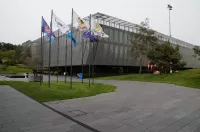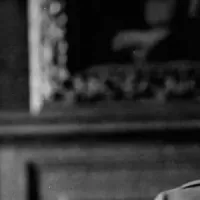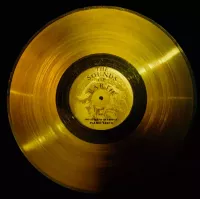Rome is the capital and most populous city of Italy, located in the Lazio region on the Tiber River. It's the third most populous city in the European Union and home to Vatican City, an independent country within its borders. Known as the "City of Seven Hills" and the "Eternal City," Rome is considered a cradle of Western civilization, Western Christian culture, and the center of the Catholic Church.
1911: Rome Hosted the Giro d'Italia
In 1911, Rome hosted the final portion of the Giro d'Italia for the first time.
1920: Rome's Population Growth
In 1920, Rome's population reached 660,000, with a significant portion residing outside the ancient city walls.
1922: Rise of Italian Fascism
In late 1922, Rome witnessed the rise of Italian Fascism led by Benito Mussolini, marked by a march on the city.
1926: Mussolini ends Democracy
By 1926, Benito Mussolini did away with democracy in Rome.
1927: S.S. Lazio Rugby 1927 Formed
In 1927, S.S. Lazio Rugby 1927 was formed as the rugby union branch of the multisport club S.S. Lazio.
1929: Lateran Treaty and Creation of Vatican City
In 1929, the Lateran Treaty created Vatican City, influenced by existing boundaries on the west bank of the Tiber.
1930: Rome Population Surpasses One Million
Soon after 1930, Rome's population surpassed one million inhabitants.
1934: Rome hosted the final games of the FIFA World Cup
In 1934, Rome hosted the final games of the FIFA World Cup.
1937: Cinecittà Studios Founded
In 1937, Benito Mussolini founded the Cinecittà studios.
1942: World Fair Planned
In 1942, a World Fair was supposed to be held in Rome, but it never took place because of the war.
July 1943: Allied Bombing Raids on San Lorenzo
On 19 July 1943, the San Lorenzo district was subject to Allied bombing raids, resulting in about 3,000 fatalities and 11,000 injuries. Mussolini was arrested on 25 July 1943.
September 1943: German Occupation of Rome
On 8 September 1943, the date of the Italian Armistice, Rome was occupied by the Germans.
June 1944: Liberation of Rome
Rome was liberated on 4 June 1944.
1950: Rome Hosted the Giro d'Italia
In 1950, Rome hosted the final portion of the Giro d'Italia for the second time.
1955: First branch of the Metropolitana opened
In 1955, the first branch of the Metropolitana finally opened, and it is now the south part of the B Line.
April 1956: Twinning of Rome
Since April 1956, Rome is exclusively and reciprocally twinned with another city.
1957: Signing of the Treaty of Rome
In 1957, Rome hosted the signing of the Treaty of Rome, establishing the European Economic Community.
1960: Rome hosted the Summer Olympics
In 1960, Rome successfully hosted the Summer Olympics, utilizing many ancient sites as venues.
1960: Rome becomes "new Hollywood"
In 1960, Rome was considered a "new Hollywood" due to the presence of many actors and directors.
1960: Host City for the 1960 Summer Olympics
Rome served as the host city for the 1960 Summer Olympics.
1970: Rome was considered "new Hollywood"
In 1970, Rome was still considered as a "new Hollywood".
1972: Division into Administrative Areas
Since 1972, Rome has been divided into administrative areas called municipi to increase decentralization.
1973: Foundation of Rome ISIA
Rome ISIA was founded in 1973 by Giulio Carlo Argan and is Italy's oldest institution in the field of industrial design.
1980: The A line opened
In 1980 the A line opened from Ottaviano to Anagnina stations.
1982: Foundation of Tor Vergata University
Tor Vergata University was founded in 1982 to decrease the overcrowding of La Sapienza.
1986: Major Snowfall in Rome
In 1986, Rome experienced a major snowfall.
1990: Rome hosted the final games of the FIFA World Cup
In 1990, Rome hosted the final games of the FIFA World Cup. The match was held in the Stadio Olimpico.
1990: Stadio Olimpico Hosts FIFA World Cup Final
In 1990, the Stadio Olimpico hosted several matches and the final of the FIFA World Cup after being enlarged and renewed.
1991: Rome hosted the EuroBasket
In 1991, Rome hosted the EuroBasket tournament.
1992: Foundation of Roma Tre University
Roma Tre University was founded in 1992 to decrease the overcrowding of La Sapienza.
1999: Extended A Line
In 1999 the A line was extended to Battistini.
2000: Extended A Line
In 2000 the A line was extended to Battistini.
2000: Italy in the Six Nations Championship
Since 2000, the Italy national rugby union team has been playing in the Six Nations Championship. Until 2011 the Stadio Flaminio was the home stadium for the team.
2001: Decline in Rome's Unemployment Rate
Between 2001 and 2005, Rome's unemployment rate lowered from 11.1% to 6.5%.
2001: Administrative Areas Named Municipi
Until 2001, the administrative areas created since 1972 were named circoscrizioni.
2002: Population Growth Between 2002 and 2007
Between 2002 and 2007, Rome's population grew by 6.54%.
2003: GDP per capita in Rome in 2003
Rome had a 2003 GDP per capita of €29,153 (US$37,412), which was second in Italy.
July 2004: Signing of the Proposed European Constitution
In July 2004, Rome played host to the official signing of the proposed European Constitution.
2005: La Sapienza University Ranking
In 2005, La Sapienza University ranked as Europe's 33rd best university.
2005: Rome's GDP in 2005
In 2005, Rome had a GDP of €94.376 billion (US$121.5 billion), producing 6.7% of Italy's national GDP.
2005: Ancient Ethiopian obelisk removed
In 2005, an ancient Ethiopian obelisk was removed from Rome.
2007: Population Growth Between 2002 and 2007
Between 2002 and 2007, Rome's population grew by 6.54%.
2008: Rome's Total Earnings in 2008
In 2008, Rome had the highest total earnings in Italy, reaching €47,076,890,463.
2009: Rome Hosted the Giro d'Italia
In 2009, Rome hosted the final portion of the Giro d'Italia for the third time.
2009: Global Wage Ranking in 2009
In 2009, Rome's workers received the 30th highest wages globally.
2010: Opening of MAXXI Museum
In 2010, Rome's newest arts foundation, MAXXI – National Museum of the 21st Century Arts, opened.
2010: Rome's Population in 2010
In mid-2010, Rome had 2,754,440 residents in the city proper and approximately 4.2 million in the greater Rome area.
2011: Non-Italian Population Statistics
According to the 2011 ISTAT statistics, approximately 9.5% of Rome's population consisted of non-Italians.
2011: Italy national rugby union team moved to Stadio Olimpico
Until 2011 the Stadio Flaminio was the home stadium for the Italy national rugby union team, which has been playing in the Six Nations Championship since 2000. In 2011 the team moved to the Stadio Olimpico.
June 2012: B1 line opened
In June 2012 the B1 line was opened after an estimated building cost of €500 million.
2012: Rare Snowfall in Rome
In 2012, Rome experienced a rare snowfall.
2013: La Sapienza University Ranking
In 2013, the Sapienza University of Rome ranked as the 62nd in the world and the top in Italy in its World University Rankings.
2013: Reduction in Number of Municipi
In 2013, the number of municipi in Rome was reduced to 15.
November 2014: C Line Opens First Section
On November 9, 2014, the first section of the C line opened, connecting Pantano with the quarter of Centocelle.
January 2015: Establishment of the Metropolitan City of Rome
Since 1 January 2015, Rome is the principal town of the Metropolitan City of Rome, replacing the old provincia di Roma.
2015: Projected opening of first section of D line
In 2015, the first section of the D line was projected to open, but due to the city's financial crisis, the project has been put on hold.
2015: Scheduled end of construction for the C line
The end of the work for the C line was scheduled in 2015, but archaeological findings often delay underground construction work.
2016: Opening of Rome Convention Center
The Rome Convention Center, Centro Congressi Italia EUR, in the EUR district, was due to open in 2016.
2018: Rare Snowfall in Rome
In 2018, Rome experienced a rare snowfall.
2019: Rome's Tourism in 2019
In 2019, Rome was the 14th most visited city globally with 8.6 million tourists and the most popular destination in Italy.
2020: Rome's Bid for the Summer Olympics Withdrawn
Rome made a bid to host the 2020 Summer Olympics, but it was withdrawn.
July 2023: Record High Temperature
On 18 July 2023, Rome recorded its highest temperature ever at 42.9 °C (109.2 °F).
2024: Fiumicino Busiest Airport in Italy
In 2024, Fiumicino became the busiest airport in Italy, transporting over 49 million passengers.
2024: Global Cities Index Ranking
In 2024, Rome was ranked 31st in the Global Cities Index.
2035: Projected opening of the final sections of the D line
In 2035, the final sections of the D line were projected to open, but due to the city's financial crisis, the project has been put on hold.
Mentioned in this timeline
Germany officially the Federal Republic of Germany is a Western...
Serie A is the top-tier professional football league in Italy...

Football is a family of team sports primarily involving kicking...

FIFA F d ration Internationale de Football Association is the...

Fascism is a far-right authoritarian ultranationalist ideology prominent in early...

Music is a cultural universal involving the arrangement of sound...
Trending

1 month ago Ryan Seacrest's Impressive Workout: Biceps Bulge Surprises Fans After Hollywood Exit

1 month ago Dennis Rodman: NBA's First Real Entertainer and Rebounding Machine, according to BJ Armstrong.
6 months ago Houthis Threaten US Ships in Red Sea Amid Iran-US Tensions Over Yemen.

9 months ago Christopher Landon, Michael Landon's Son, Carves Niche as Horror Director with 'Drop'.

Charles Edward Chip Kelly is an American football coach currently serving as the offensive coordinator for the Las Vegas Raiders...
2 months ago Pittsburgh weekend weather: Showers possible for College Gameday, cooler temperatures expected.
Popular

Stranger Things created by the Duffer Brothers is a popular...

XXXTentacion born Jahseh Dwayne Ricardo Onfroy was a controversial yet...
The Kennedy Center Honors are annual awards recognizing individuals and...
Turning Point USA TPUSA is an American nonprofit organization founded...

Bernie Sanders is a prominent American politician currently serving as...

Kashyap Pramod Patel is an American lawyer who became the...